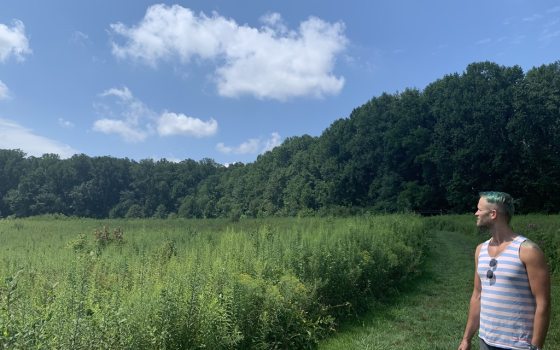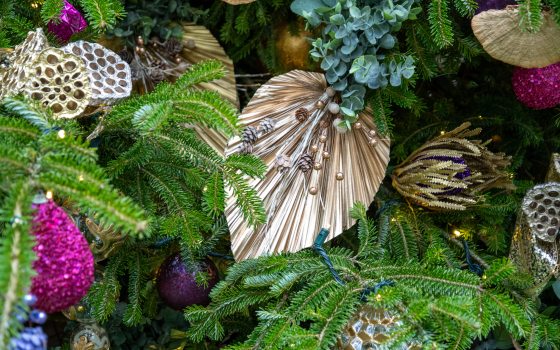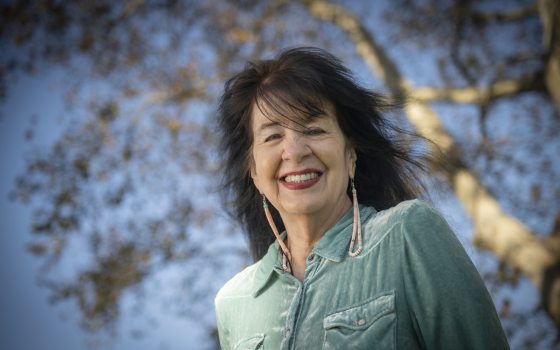Designed and maintained by the students in our two-year Professional Horticulture Program, the Student Exhibition Garden in our Idea Garden is a place of creativity, of beauty, and of amazing, thought-provoking concepts and themes we are honored to showcase. This year, as part of the Professional Horticulture Program, our nine students have been asked to design, create, and maintain three garden designs based on the theme of change and adaptation. Three of the students’ concepts, conceived by Kyle Post, Allison Edmonds, and Kinga Obartuch and supported by the Professional Horticulture Program class, have been selected to move forward in the Student Exhibition Garden planning process. As they work on bringing this garden space to life, for its mid-May through September display, Kyle, Allison, and Kinga share the inspiration behind their designs—from perspective, to conformity and destruction, to neurodiversity and celebrating our differences—along with what each Student Exhibition Garden space means to them … and what you can expect to see in the coming months.
Kyle Post: The Only Way Out is Through
It was a balmy August day in 2020 when I first discovered Longwood Gardens (as pictured in the first photo of this blog post). I was on a road trip back from hiking in the Smoky Mountains with friends. After about 10 minutes of wandering the gardens, I knew I was in a special place. My friends and I spent the day with our proverbial jaws on the ground. When we made our way to the Idea Garden and came upon the Student Exhibition Garden, I found a plaque explaining that they were designed and implemented by students in Longwood’s Professional Horticulture Program. At that moment, I made a note in my calendar to apply to the program for the next year because I knew I wanted to live, learn, and work in this garden.
Fast forward to today and I’m one of nine students in the Professional Horticulture Program class of 2023 here at Longwood Gardens and one of the three students fortunate enough to have their designs implemented in the Student Exhibition Garden this spring! We have spent the past year and a half learning everything there is to know about horticulture and now my team and I get to demonstrate everything we’ve learned in this garden.

Professional Horticulture Program student Kyle Post presents the The Only Way Out is Through garden design concept to members of Longwood’s team, along with Professional Horticulture Program students Allison Edmonds (far left) and Kinga Obartuch (middle). Photo provided by Kyle Post.
The title of the garden is “The Only Way Out is Through”. It’s about seeing change and adaptation from two perspectives: One is what we may see from the outside when others are going through change. It may look bright and full of light, beauty, and freedom. The other side is what it feels like when we are actually in the midst of change. It can feel isolating, uncomfortable, and dark. We can see those glimpses of light that are coming for us on the other side of change but we can’t experience them for ourselves yet because “the only way out is through”. Guests will get to experience those opposing viewpoints in this garden. From the outside, they will see bright beautiful flowers amongst brightly painted columns beckoning them to step inside. Once inside, those same columns will serve as a way to have them experience the isolation and tension that inevitably comes with change and adaptation while also seeing those moments of light awaiting them.
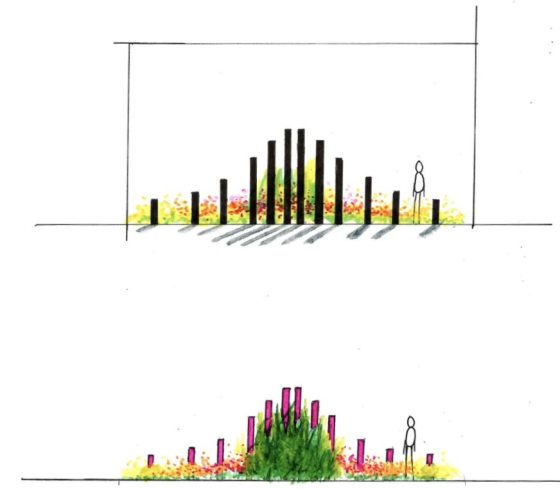
Kyle Post’s renderings of the outside and inside of The Only Way Out is Through garden show the garden in its two perspectives. The lower rendering is a view of the garden from the outside, the above rendering is a view of the garden and posts from the inside. Renderings by Kyle Post.
My incredible teammates and classmates Elizabeth Ciskanik and Ben Helde couldn’t be more excited to share this garden with guests here at Longwood. We hope it speaks to others who are in the midst of change and reminds them of the beauty headed their way. It is the culmination of not only the past year and a half of everything we’ve learned in the Professional Horticulture Program but also from that balmy August day in 2020 when my life changed forever entering the gorgeous gates of Longwood Gardens for the first time.
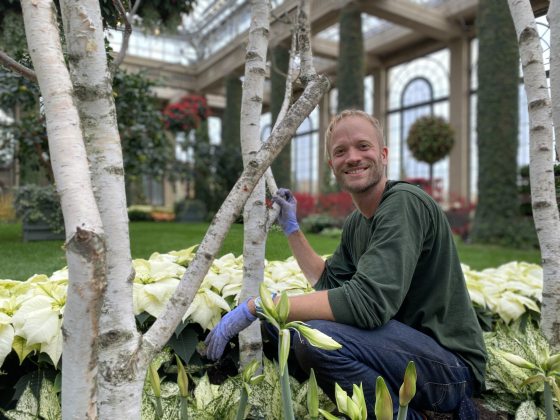
Kyle Post, pictured during A Longwood Christmas installation in November 2021. Photo by Madison Thibodeau.
Allison Edmonds: Break What Needs Fixing
The Student Exhibition Garden is an opportunity for us to experiment with the artistic and practical aspects of gardening. We have been tasked with telling a personal story about change and adaptation and bringing it to life through plants. It’s no small feat, considering the ever-changing nature of plants and the web of factors that influence a garden. Thankfully, as Kyle mentioned above, we have been intensively training with expert horticulturists and are ready for the challenge.
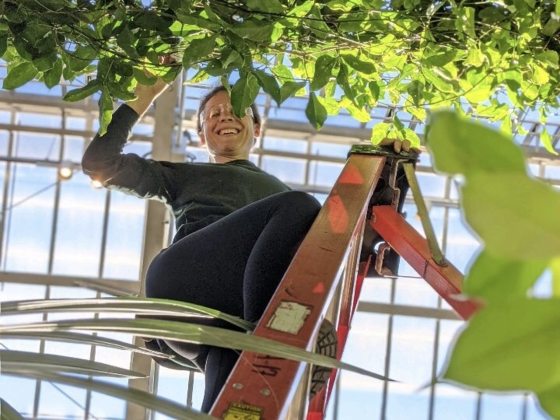
Allison Edmonds, pictured during A Longwood Christmas installation in November 2021. Photo by Kinga Obartuch.
I’m working on a team with fellow Professional Horticulture Program students Faith Redcay and Rowan Nygard. Our garden is titled “Break What Needs Fixing”. The design explores conformity (adaptation) and the freedom that can come from destruction (change). It is a reaction to the limiting and oppressive systems in which we live, systems that demand we change ourselves to fit within them, as though confining us to a small, stifling box. The design imagines that under this incessant pressure, we are moved to apply an equal and opposing force--to expand and burst free from the box. Blow. It. Up.
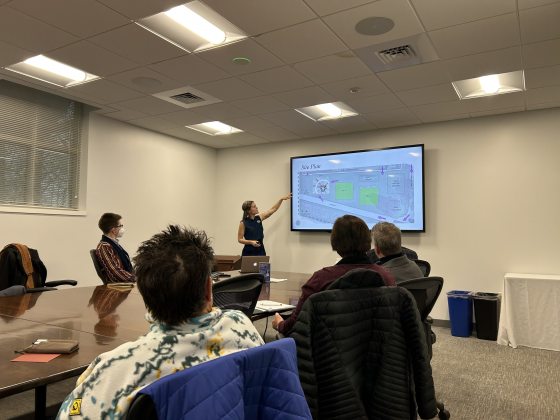
Professional Horticulture Program Student Allison Edmonds presents the Break What Needs Fixing garden design concept to members of Longwood’s team. Photo provided by Allison Edmonds.
In practice, it can be immensely challenging to deviate from or change societal norms; it is a process that might leave scars. But as we walk through the wreckage of these confines, we will discover an expansive space, buzzing with the energy of possibility. New growth will soften the harsh angles of destruction and reflect our vibrant, complicated, remarkable selves. We believe that we all have within us an explosive power when we can access and express our authenticity, but for that to be a reality, we must challenge and change the systems that limit us.
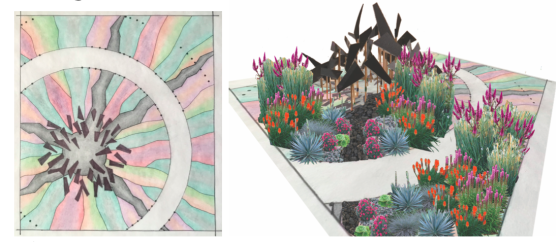
Allison Edmonds’ renderings of Break What Needs Fixing show the garden in plan view, from above (left) and in perspective view (right). Both views illustrate the central metal sculpture “explosion,” fissures, and radiating rays of colorful plants expanding outward. Renderings by Allison Edmonds.
In the garden, metal shards, as if frozen mid-explosion, will float above fissures of scorched earth. From this destructive moment, planted rays of cool blues and greens and fiery oranges and fuchsias will radiate out in all directions. Guests will be invited into the scene following a shockwave path. While in our garden, we hope guests experience joy and curiosity and take a moment to contemplate their inner power. It is an exciting privilege to share our vision with you, here at Longwood Gardens.
Kinga Obartuch: Loud Hands: A Stimming Garden
Along with my Professional Horticulture Program students and teammates Brandon Jones and Jamie Firman, I am working on a garden titled “Loud Hands: A Stimming Garden”. To explain the concept of our garden, there are two words I should define: first, neurodiversity, which views certain brain-based disabilities, including autism, ADHD, and intellectual disabilities, not as disorders to be cured but as normally occurring variations in the ways human brains work, as defined by the Autistic Self-Advocacy Network, a national grassroots disability rights organization for the autistic community. Second, stimming, which refers to repetitive, sensory self-stimulating behaviors common among neurodiverse people.
Stimming can involve anything from repeating sounds (echolalia) to hand flapping or finger flicking, from touching soft textures to spinning or dancing and more. It is one of the ways that neurodiverse people like myself adapt to a world that is not built for us. We stim because it helps calm or regulate us when we are stressed or overwhelmed. But we also stim to seek joy--because we find pleasure in a particular sensation or movement or texture.
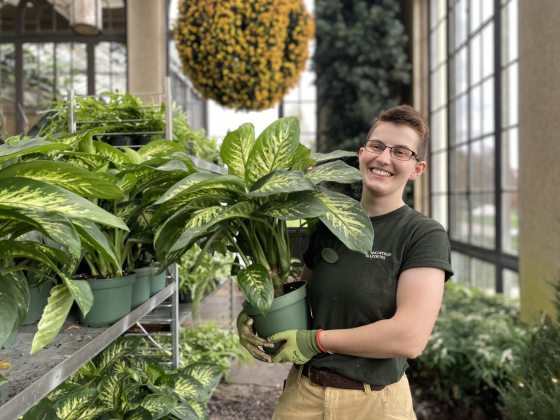
Kinga Obartuch, pictured during A Longwood Christmas installation in November 2021. Photo by Madison Thibodeau.
Stimming is often stigmatized and even punished among neurodiverse children. The title of our garden, “Loud Hands”, is a play on a refrain familiar to many autistic folks: “quiet hands” or the idea that neurodiverse kids should be forced not to stim because it is not “normal” or it can be seen as “disruptive” in a neurotypical setting. The idea of “loud hands” isn’t just a title, but a response to the often traumatic and abusive therapies autistic kids experience that force them not to stim, and prevent them from using alternative, non-neurotypical ways to communicate. I was inspired by this concept, as well as the work of Julia Bascom, autistic advocate and editor of the anthology Loud Hands: Autistic People, Speaking—in which she recounts her firsthand experience with such therapies—in the naming and the design of this garden.
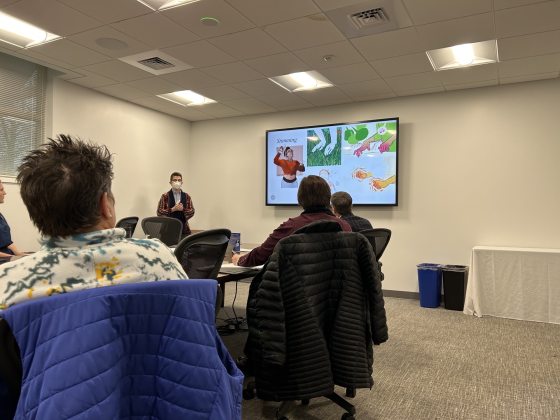
Professional Horticulture Program student Kinga Obartuch presents the Loud Hands: A Stimming Garden design concept to members of Longwood’s team. Photo provided by Kinga Obartuch.
To me, this garden design is about accommodating and even celebrating our differences. We are creating a space for other neurodiverse people to have a chance to interact with some fascinating plants, by touch, fragrance, or other interaction, and stim as loudly and excitedly as they want—and in the process, to fall a little more in love with plants, gardening, and the potential for horticulture to improve peoples’ lives.
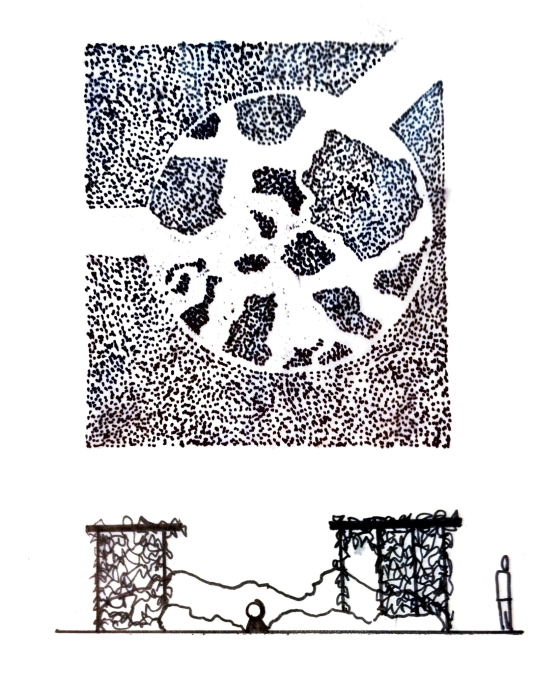
My team and I have selected plants that will provide a diverse range of sensory experiences, drawing on the skills and knowledge we’ve learned over the last year and half of the Professional Horticulture Program. The garden will feature plants such as Lagurus ovatus (Hare’s-tail Grass), which has a soft and fluffy seed pod; Xerochrysum bracteatum (Strawflower), which has everlasting flowers that create sound when touched; and Pycnanthemum muticum (Clustered Mountain-mint), which has soft, fuzzy leaves and a gentle fragrance. We are excited for both neurodiverse and neurotypical guests to visit our garden and experience how joyful it can be to stim.
Editor’s Note: See these spectacular concepts come to life in our Student Exhibition Garden, on view May 31 through October 31, 2023.
More information on neurodiversity can be found via the Autistic Self-Advocacy Network, and more on “quiet hands” can be found here.
Interested in joining our Professional Horticulture Program? Applications are open now through April 1 for this two-year, tuition-free program that combines hands-on, immersive learning with classroom experience to train and prepare future horticulturists for successful careers. Designed for those currently working in the field, a recent high school or college graduate, or looking to change careers, no other program combines practical experience, coursework, interactive projects, and study abroad opportunities—tuition-free. Learn more and apply.
